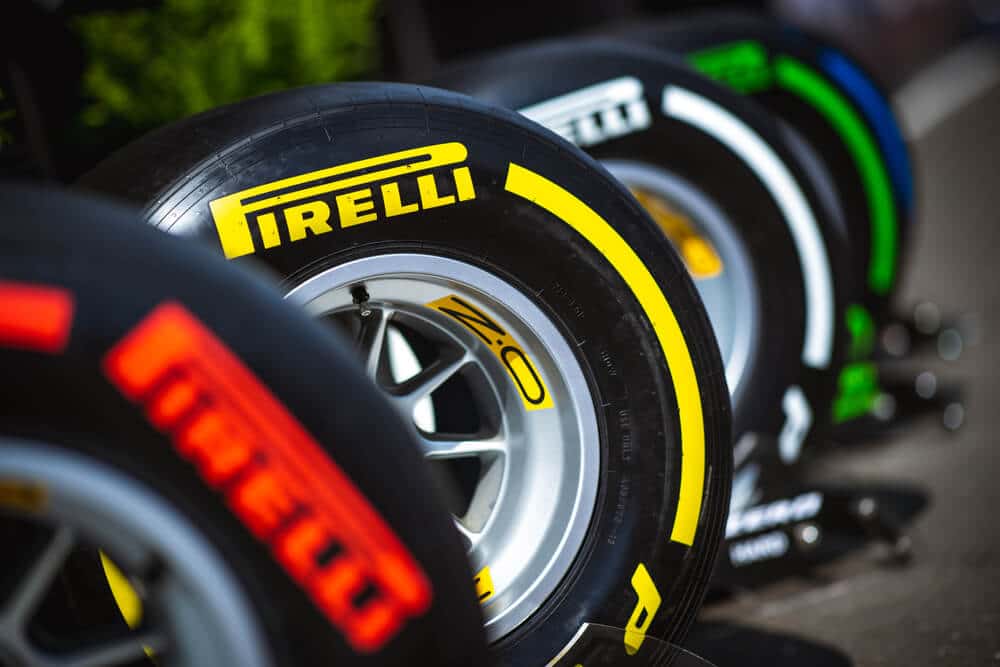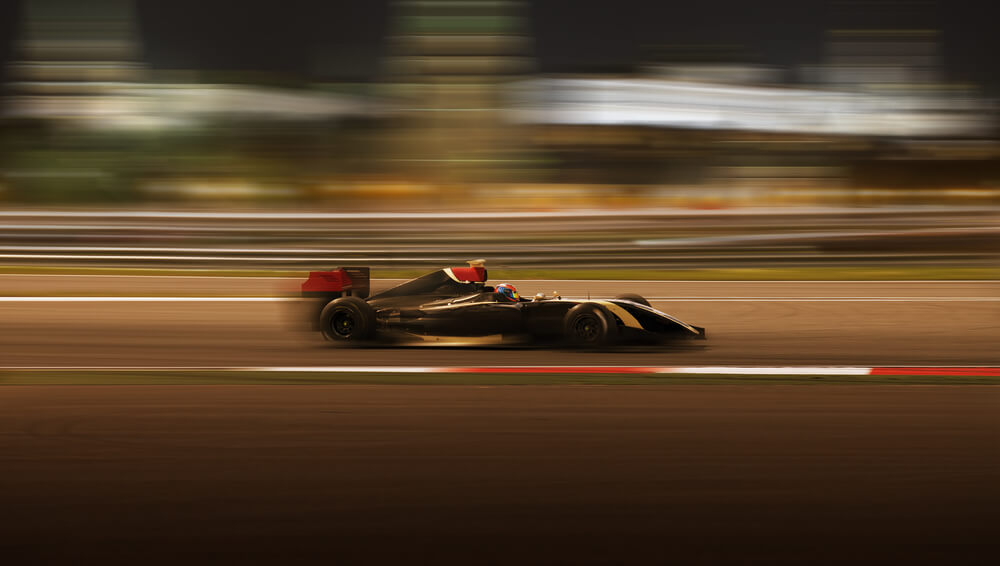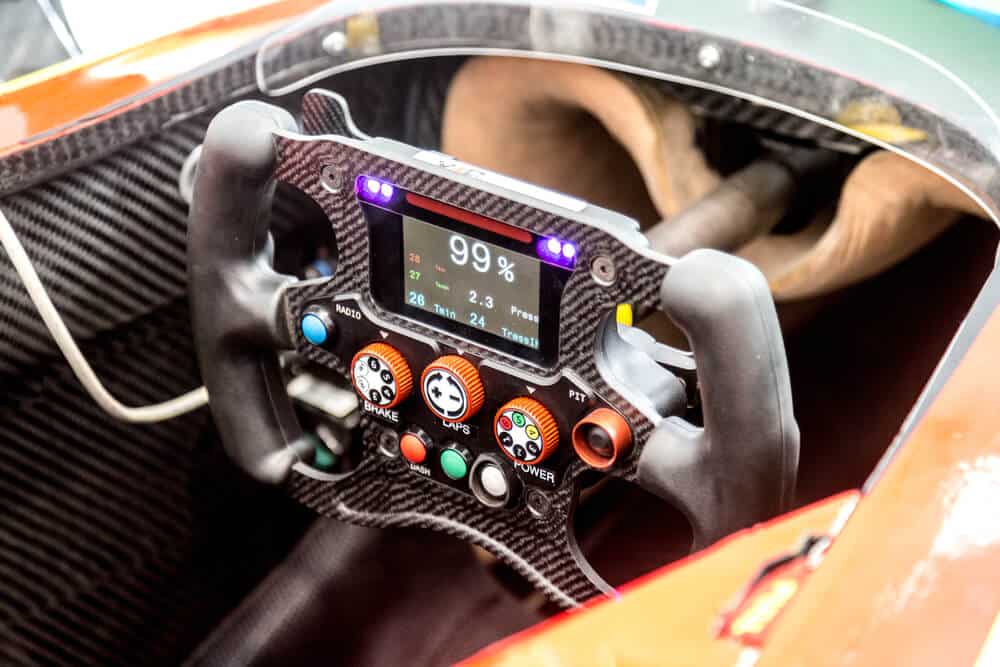When it comes to the thrilling world of Formula One racing, one cannot underestimate the critical role that sticker tires play in achieving top performance on the track. These high-performance tires are specifically designed to provide exceptional grip, traction, and durability, allowing drivers to push the limits of speed and cornering.
In this comprehensive article, we will delve into the intricate details of sticker tires, exploring their anatomy, performance characteristics, selection strategies, tire management techniques, and their crucial role in race strategy. Buckle up as we take you on a gripping ride into the world of sticker tires!
Table of Contents
Watch this video to learn more about tires in F1.
Anatomy of a Sticker Tire
Sticker tires are marvels of engineering, meticulously crafted to deliver optimal performance under demanding track conditions. Let’s explore the key elements that make up these extraordinary tires:
Construction and Materials
Sticker tires are constructed using multiple layers, each serving a specific purpose. The outermost layer is the tread, which comes in various patterns designed to maximize grip and traction. Beneath the tread lies the carcass, consisting of plies of specially engineered fabrics, such as nylon or aramid, providing strength and stability. Reinforcing belts made of steel or aramid are placed on top of the carcass to enhance cornering stability and responsiveness. Finally, the inner liner, made of synthetic rubber, acts as a barrier to maintain tire pressure.
Tread Patterns and Compounds
The tread pattern of a sticker tire plays a crucial role in optimizing performance on different track surfaces and weather conditions. Tread patterns can vary from symmetric to asymmetric designs, with each offering distinct advantages. For instance, symmetric tread patterns provide uniform performance, while asymmetric designs excel in enhancing cornering grip.
Furthermore, sticker tires employ different rubber compounds to suit specific track temperatures and conditions. Softer compounds offer superior grip but wear out faster, while harder compounds provide greater durability at the expense of grip. Tire manufacturers work closely with Formula One teams to develop compounds that strike the perfect balance between performance and longevity.
To provide a deeper understanding, let’s take a look at a table comparing different tread patterns and compounds:
|
Tread Pattern |
Advantages |
|
Symmetric |
Uniform performance on all track surfaces |
|
Asymmetric |
Enhanced cornering grip |
|
Rubber Compound |
Advantages |
|
Soft |
Superior grip, ideal for hot track conditions |
|
Medium |
Balanced performance and durability |
|
Hard |
Increased durability for longer races |
The Sticker Tire Lifecycle
The journey of a sticker tire begins long before it hits the track. From manufacturing to race-day allocation, here’s a closer look at the various stages in the sticker tire lifecycle:
Manufacturing Process
The manufacturing of sticker tires involves intricate processes that demand precision and expertise. Advanced machinery is utilized to create the tire’s different components, including the carcass, tread, and inner liner. Skilled technicians carefully assemble these components, ensuring the tire meets the stringent regulations set by the FIA.
Storage and Transportation Considerations
Sticker tires require specific storage conditions to maintain their performance characteristics. Tire manufacturers recommend storing them in temperature-controlled environments to prevent degradation. Additionally, careful handling and transportation are essential to avoid any damage that could compromise the tire’s integrity.
Pre-Race Preparation and Tire Allocation Strategies
Prior to a race weekend, teams work closely with their tire specialists to analyze track conditions and develop tire allocation strategies. This involves determining the number of each type of tire compound required based on factors like track temperature, degradation levels, and the team’s anticipated race strategy. These allocation decisions are crucial in ensuring the team has the optimal set of tires for the race weekend.
During pre-race preparation, the sticker tires undergo meticulous checks and preparations. Tire specialists carefully inspect each tire, examining the tread depth, sidewall integrity, and any signs of wear or damage. They also ensure that the tires are properly inflated to the recommended pressure for optimal performance.
To facilitate tire allocation and management, teams often create detailed tire plans and strategies. This involves considering factors such as the number of sets available for practice sessions, qualifying, and the race itself. The tire specialists collaborate with engineers and strategists to devise a plan that maximizes performance while adhering to the regulations imposed by the FIA.
Performance Characteristics
Sticker tires are designed to deliver exceptional performance characteristics, enabling drivers to extract every ounce of speed and precision from their Formula One cars. Let’s delve into two crucial aspects: grip and traction, and durability and wear.
Grip and Traction
Grip is the holy grail of tire performance in Formula One. It directly affects a car’s ability to maintain speed while cornering and to accelerate efficiently. Sticker tires are engineered to provide unparalleled grip, allowing drivers to take corners at incredible speeds with confidence.
Several factors influence tire grip, including temperature, pressure, and track conditions. Optimal tire temperature is critical, as it directly impacts the interaction between the rubber and the track surface. Tire specialists carefully monitor tire temperature during warm-up laps, ensuring they reach the optimum operating range for maximum grip.
Tire pressure is another key factor that affects grip. Higher pressures result in a smaller contact patch, reducing grip. Conversely, lower pressures increase the contact patch, improving grip but potentially compromising stability. Tire specialists work closely with engineers to find the optimal pressure range for each track and race condition, striking a balance between grip and stability.
Track conditions, such as temperature, humidity, and the amount of rubber already laid down on the surface, also influence tire grip. Sticker tires are engineered to perform optimally on various track surfaces, adapting to both dry and wet conditions. Tread patterns and rubber compounds play a vital role in providing the necessary grip and traction needed to tackle these diverse conditions.
Durability and Wear
While grip and traction are crucial, sticker tires must also exhibit durability to withstand the grueling demands of a Formula One race. Durability refers to a tire’s ability to maintain consistent performance over an extended period, while wear represents the gradual erosion of the tire’s tread and overall performance.
Balancing durability with performance is a delicate task. Tire specialists and engineers analyze various factors, including track conditions, compound choices, and driving styles, to determine the expected wear rate of the tires. This information helps teams devise strategies to manage tire wear effectively during the race.
Tire wear primarily occurs due to the abrasive nature of the track surface and the immense forces exerted on the tires during high-speed maneuvers. As the tire’s tread wears down, grip levels gradually diminish, affecting lap times and overall performance. Tire specialists closely monitor wear patterns, ensuring that teams make well-timed pit stops for fresh tires to maintain optimal performance.
Managing tire wear involves adopting appropriate driving styles and making setup adjustments. Smooth and consistent driving minimizes tire degradation, while aggressive driving styles can accelerate wear. Additionally, adjustments to suspension settings, such as camber and toe angles, can help distribute the forces more evenly, reducing wear and extending tire longevity.
Tire Selection Strategies
Selecting the right tire for a given race is a complex process that requires careful analysis of multiple variables. Let’s explore the key factors that influence tire selection strategies:
Analyzing Track Characteristics and Weather Conditions
Track characteristics play a pivotal role in determining the appropriate tire choice. Factors such as track layout, surface abrasiveness, and the number of high-speed or low-speed corners all influence tire performance. Tire specialists meticulously study these aspects to identify the optimal tire compound and tread pattern for a specific track.
Weather conditions further complicate tire selection. Rain, for example, significantly affects grip levels, requiring the use of specialized wet-weather tires. Tire specialists closely monitor weather forecasts and track conditions to make informed decisions regarding tire selection and potential changes during the race.
Factors Influencing Tire Selection
Several factors come into play when selecting the most suitable tire for a race:
- Temperature: Ambient and track temperatures greatly impact tire performance. Cooler temperatures may necessitate softer compounds to maintain grip, while hotter temperatures may require harder compounds for durability.
- Track Surface: The amount of rubber laid down on the track surface affects tire grip. A “green” track with minimal rubber requires tires that can lay down rubber effectively, whereas a well-rubbered track may favor tires that provide maximum grip.
- Degradation Levels: Tire degradation varies depending on the track surface, temperature, and driving style. Higher degradation levels may call for tires with better wear characteristics to maximize performance throughout the race.
Role of the Team’s Tire Specialist
Tire specialists play a crucial role in the tire selection process. They collaborate closely with engineers, strategists, and drivers to analyze data from practice sessions, qualifying laps, and simulations. By studying tire performance under different conditions, they provide valuable insights into optimal tire choices for each phase of the race.
Tire specialists also rely on data from previous races and historical trends to make informed decisions. Their expertise and attention to detail are essential in determining the right balance between grip, durability, and wear for the specific demands of a race weekend.

Sticker Tires and Pit Stops
Pit stops are pivotal moments in a Formula One race, providing teams with opportunities to change tires, refuel, and make necessary adjustments. Let’s explore how sticker tires are managed during pit stops:
The Impact of Pit Stops on Tire Strategy
Pit stops offer teams strategic advantages in terms of tire changes. Depending on race conditions, teams may opt for one or multiple pit stops to maximize tire performance and overall race strategy. Timing these stops is crucial to ensure minimal time loss while taking advantage of fresh tires.
Tire specialists closely monitor tire performance during a race, providing real-time feedback to the team. By assessing tire degradation and lap times, they advise strategists and drivers on the optimal timing for pit stops to maintain a competitive edge.
Tire Change Procedures and Considerations
During a pit stop, the tire change process requires precision and efficiency. Highly skilled pit crews perform lightning-fast tire changes, replacing all four tires within a matter of seconds. These teams practice tirelessly to perfect their techniques, minimizing the time spent in the pit lane.
Tire specialists work closely with the pit crew to ensure that the new tires are prepared and ready for installation. They consider factors such as tire temperatures, pressure adjustments, and any specific setup changes required to optimize the new set of tires.
Balancing tire performance with pit stop timing is a delicate task. Teams aim to maximize the benefits of fresh sticker tires while minimizing the time lost in the pits. This strategic balance is crucial for maintaining a competitive position on the track.
Tire Management Techniques
Effective tire management techniques can make a significant difference in a race’s outcome. Let’s explore two key aspects of tire management: warm-up procedures and driving style adjustments.
Warm-Up Procedures
Proper tire warm-up is vital to ensure optimal performance from sticker tires. Tire warm-up techniques vary depending on track conditions and temperature. Tire specialists work closely with drivers to develop warm-up rituals that suit their individual preferences and driving styles.
During the warm-up lap, drivers engage in a series of maneuvers to generate heat in the tires. This includes weaving side to side, braking aggressively, and accelerating quickly to build up temperature and activate the tire compounds. By carefully managing tire temperature, drivers can maximize grip and responsiveness right from the start of the race.
Tire specialists closely monitor tire temperatures during warm-up laps, providing real-time feedback to drivers. This feedback helps drivers fine-tune their warm-up techniques to achieve the optimal tire temperature range for peak performance.
Driving Style and Adjustments
Adapting driving style to preserve tire performance is a skill that distinguishes top Formula One drivers. Aggressive driving can accelerate tire wear and compromise performance, while a smooth and controlled driving style can extend tire longevity.
Tire specialists work closely with drivers to analyze data from practice sessions and races, identifying areas where adjustments can be made to optimize tire management. This includes monitoring braking points, cornering techniques, and throttle application to minimize tire stress and wear.
Furthermore, adjustments to the car’s setup can also aid tire optimization. Suspension settings, such as camber and toe angles, can be fine-tuned to distribute forces more evenly across the tire’s contact patch. This helps mitigate excessive wear and ensures consistent performance throughout the race.
By adopting effective tire management techniques and making necessary adjustments, drivers can maximize the lifespan and performance of sticker tires, ultimately gaining a competitive advantage on the track.
Sticker Tires and Race Strategy
Race strategy in Formula One involves a careful balance of various factors, with tire management playing a crucial role. Let’s explore how sticker tires influence race strategy:
Analyzing Tire Performance during Qualifying and Race Simulations
Tire specialists meticulously analyze tire performance data gathered during qualifying and race simulations. This data includes lap times, tire degradation rates, and overall consistency. By studying this information, teams can gain valuable insights into the behavior of different tire compounds under varying conditions.
Understanding tire performance during simulations helps teams determine the optimal race strategy. Factors such as the number of pit stops, tire changes, and the length of each stint are carefully considered to maximize performance while minimizing time loss in the pits.
Strategies for Different Race Scenarios
Race scenarios can vary greatly, presenting teams with unique challenges. Tire specialists work closely with strategists to devise plans that adapt to various situations, such as safety car periods, rain, or the need for overtaking.
In scenarios where a safety car is deployed, teams may choose to pit and change tires to take advantage of the reduced pace and maintain optimal tire performance for the remaining laps. Rainy conditions require the use of specialized wet-weather tires, with tire specialists providing real-time information to strategists regarding the optimal time for a tire change.
Overtaking strategies also consider tire performance. Teams may opt for aggressive tire choices to gain an advantage during overtaking opportunities, relying on the superior grip of sticker tires to make decisive moves on the track.
Optimal Timing for Tire Changes and Pit Stops
Timing is crucial when it comes to tire changes and pit stops. Tire specialists play a key role in providing real-time feedback to strategists regarding tire wear, degradation rates, and overall performance. This information helps teams determine the optimal timing for pit stops, ensuring that fresh sticker tires are utilized at the most advantageous moments during the race.
Strategically timed pit stops not only provide drivers with fresh sticker tires but also offer teams the opportunity to adjust the car’s setup, refuel if necessary, and address any other mechanical concerns. This meticulous planning and execution of pit stops and tire changes can significantly impact a team’s race position and overall performance.
Frequently Asked Questions
1. What are sticker tires in Formula One racing?
2. How are sticker tires different from used tires in Formula One racing?
3. How do tire specialists prepare sticker tires for a race?
4. What factors influence the grip and traction of sticker tires?
Conclusion
Sticker tires are an integral part of Formula One racing, providing drivers with the grip, traction, and durability required to push the limits of speed and performance. From their intricate construction and selection strategies to tire management techniques and race strategy considerations, sticker tires play a pivotal role in determining race outcomes.
Tire specialists, with their deep understanding of tire performance, track conditions, and driver preferences, are instrumental in optimizing tire choices, managing tire wear, and making strategic pit stop decisions. Their expertise, coupled with the tire manufacturers’ tire technology advancements, ensures that teams can extract the maximum performance from sticker tires in every race.
As the heart-pounding action of Formula One continues to captivate fans around the world, the evolution and innovation of sticker tires remain at the forefront of technological advancements in the sport. With each passing race, teams and tire specialists strive to find the perfect balance between grip, durability, and performance, pushing the boundaries of what is possible on the track.
So, the next time you witness a Formula One race, take a moment to appreciate the meticulous craftsmanship and engineering brilliance behind those sticker tires, as they propel the drivers to new heights of speed, precision, and exhilaration in the pursuit of victory.
Article sources
Learn more about Formula One
Want to learn more about F1? Then visit our Formula 1 glossary and dictionary.



